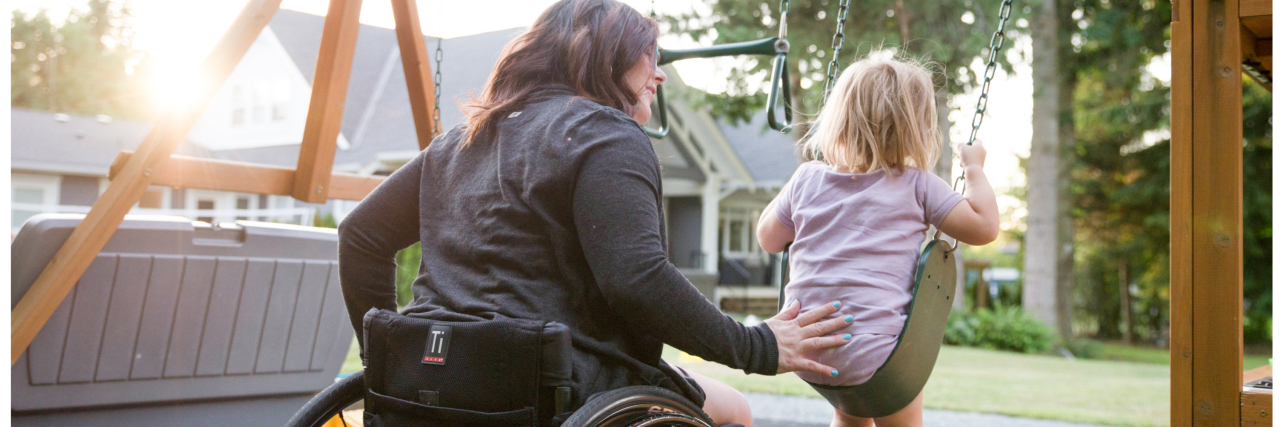Do you feel well represented in the media? I did for the first 28 years of my life. The Caucasian, heterosexual female demographic isn’t usually ignored. But when I added disabled to the description, my representation all but disappeared from the airwaves. The lack of diversity in the media is an ongoing issue I became well aware of after I traded my legs in for wheels. However last week, two posts appeared on my social media feeds — one local and one viral — that really got me thinking.
As smaller local shops have gained in popularity, their brands have relied heavily on a social media presence. Sasha Ruschienski, owner of TATTRD Threads, called herself out on her own social media recently for the lack of diversity in her feed. It wasn’t something she did with intent, but she recognized it had been done all the same. She wrote “I want my feed to reflect my heart and right now it does not.”
She wants to remedy the situation, and she challenged other small shops to do the same. The question is, what is their best course of action?
I contemplated that question for a couple of days before another story caught my attention. A bridal boutique in England made international headlines when they used a mannequin wearing a gown, sitting in a wheelchair, as part of their window display. They weren’t boastful about their display, but it drew the attention of passersby because it was different, but it was subtle and tactful. This shop silently and respectfully showcased a type of woman rarely seen — rarely celebrated — in media and marketing, and focused solely on what they could offer her: a wedding dress.
The new wedding shop in town has a wheelchair using mannequin and it shouldn’t be exciting but it’s the first time I’ve ever seen disability portrayed in a shop window. pic.twitter.com/N5sco2fLJf
— Beth Wilson (@doodlebeth) January 9, 2019
After seeing both of these posts, I really started to consider what could create successful and long-lasting change when it comes to diversity in media. Most people agree it is important to represent all types of humans, but the implementation often misses the mark. And with so many people getting offended, I understand the hesitation in pulling the trigger on making a change — especially as a small business owner. I think Tina Fey said it best when she said, “Talking to anyone, anywhere in 2018 is just landmine hopscotch.”
So what is the best way to create diverse media and market your brand in an inclusive manner and without offending the masses? Here are three things I, as a minority, believe are key to seamless integration of diversity and inclusion in mainstream media.
Keep It Simple
Making your brand diverse and inclusive doesn’t need to be done in an extravagant way. It doesn’t need to be rolled out as some sort of special campaign with flashy titles and clickbait-style descriptions. In the end, all that will do is defeat your well-intentioned purpose. If you want to be inclusive, the answer is simple: include everyone. Don’t shine the spotlight on every non-Caucasian, disabled or LGBTQ person you incorporate. Saying “Look at me, I’m including someone different” only highlights the fact that the person is considered different. The goal is to integrate, not isolate. Take the photo at the top of this article as an example. Mention the disability and that becomes the focus of the photo. Mention nothing and the focus becomes a woman playing with her daughter.
Keep It Relevant
Everyone has a target demographic. Don’t stray from that in the name of diversity because it will appear forced and irrelevant. The woman in a wheelchair isn’t going to sell your athletic shoe meant to improve a runner’s performance. Instead, seek out the diversity within your target demographic. Targeting families? Include parents with a disability, bi-racial families, same-sex parents or children with a disability. A woman in a wheelchair pushing her child on a swing is just as relevant as her able-bodied counterpart. There are ways to work within the constraints of your brand towards the inclusion of all types of people. And when you stay relevant to your brand while diversifying the way you showcase it, you create seamless inclusion that is subtle but meaningful.
Keep It Realistic
When media includes all different kinds of people, it helps to normalize the aspects of the human race we see as different. With that comes a responsibility to convey things properly and in a realistic way. Don’t play into stereotypes. Choose to be authentic to the communities you are representing. I’ve noticed that too often someone in a wheelchair shows up in a stock image or in a television show and they are in an oversized, manual wheelchair like the ones you would find at an airport. That is not painting a realistic picture of a full-time wheelchair user. But when the images in the media are so few, it begins to shape public perception. Use your brand, your voice and your platform to help change that perception.
From small shops to large business, creating diversity in your brand doesn’t have to be complicated. Keeping it simple, relevant and realistic will ensure you keep it respectful and meaningful. If you want to be authentic and are unsure of where to start, seek out the advocates and influencers all over social media — they would love to collaborate with you and offer insight. But you have to start the conversation within your business. Like Sasha, look at your own media and decide if your brand is reflective of your heart. Ask yourself if you are showcasing everyone you want to reach. But most importantly, implement. Diversify your content and help change your brand — and the face of media — to be all-encompassing, inclusive and representative of everyone.

